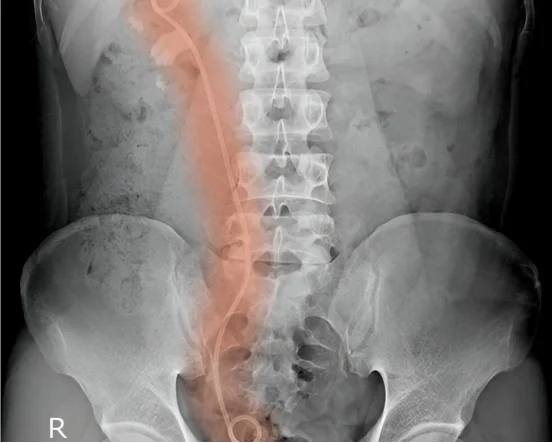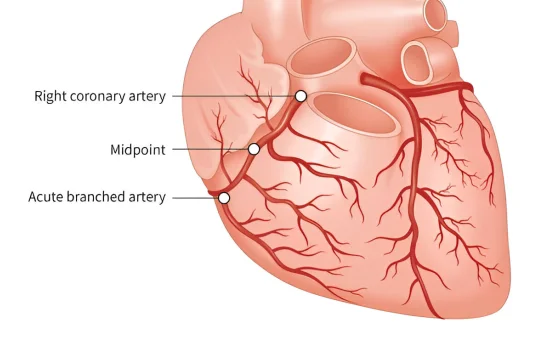Introduction
Atrial Septal Defect (ASD) and Ventricular Septal Defect (VSD) are congenital heart conditions involving abnormal openings in the walls that separate the heart’s chambers. ASD refers to a hole between the upper chambers (atria), while VSD involves a hole between the lower chambers (ventricles). These defects may be present at birth and can vary in size and impact. Some close on their own during early development, while others persist and lead to complications.
In cases where the defect is significant and causes symptoms or puts the heart and lungs under strain, surgery is often recommended. The need for ASD or VSD closure surgery typically arises when symptoms begin to interfere with everyday life or when imaging reveals damage or risk to the heart and lungs. Recognizing the symptoms for asd and vsd closure surgery that suggest a need for surgical correction is vital for timely treatment. While some people remain symptom-free for years, others develop noticeable signs that indicate the body is not coping well with the circulatory imbalance caused by the heart defect.
Symptoms for ASD and VSD Closure Surgery
- Shortness of Breath During Physical Activity :- One of the most common and telling signs that an individual may need ASD or VSD closure surgery is experiencing shortness of breath, especially during exertion. In a healthy heart, oxygen-rich and oxygen-poor blood remain separate, ensuring the body gets the oxygen it needs. However, in ASD or VSD, blood flows abnormally between chambers, reducing efficiency and overloading the lungs with excess blood. This excess pressure in the pulmonary circulation makes breathing harder during activities like walking, climbing stairs, or playing sports. Over time, this can become a daily limitation, not just during physical strain but even at rest. In children, it may show up as reduced activity levels, early fatigue, or unwillingness to engage in play. Adults may find themselves getting winded more quickly or feeling heavy in the chest even after mild exercise. This symptom is a significant indicator that the defect is impairing heart and lung function and often prompts evaluation for surgery.
- Frequent Respiratory Infections :- ASD and VSD closure can lead to repeated respiratory illnesses such as bronchitis or pneumonia. This is particularly common in infants and young children. The mixing of oxygen-rich and oxygen-poor blood causes increased blood flow to the lungs, leading to congestion and fluid accumulation in the airways. This moist environment creates a breeding ground for bacteria and viruses, making the lungs more vulnerable to infection. Parents may notice that their child catches colds more frequently than their peers, often with more severe symptoms and longer recovery times. Hospitalizations for chest infections might also increase. In adults, this symptom might appear as a chronic cough or frequent episodes of bronchitis. Repeated infections not only compromise overall health but also signal that the heart defect is overworking the lungs. When this becomes a pattern, surgical closure is often recommended to relieve the pressure on the pulmonary system and restore normal lung function.
- Poor Growth and Weight Gain in Infants :- In newborns and young children, inadequate weight gain and stunted growth are red flags for a heart defect requiring intervention. The body of an infant with a significant ASD and VSD is working much harder to maintain normal circulation, consuming more energy than usual. As a result, even with normal feeding, the baby may not gain enough weight or may appear weak and undernourished. Feeding itself can become a challenge, with the baby tiring easily, sweating during feeding, or refusing to eat due to discomfort. Over time, this leads to delayed developmental milestones, underdeveloped muscles, and overall failure to thrive. Pediatricians closely monitor growth charts, and when these concerns are coupled with a known heart defect, they often refer for a surgical evaluation. Closure of the defect allows the body to conserve energy and improves the child’s ability to grow and develop normally.
- Fatigue and General Weakness :- Fatigue is another symptom that suggests the heart is under stress due to an uncorrected ASD and VSD closure. When the body does not receive enough oxygenated blood because of the mixing of oxygen-rich and oxygen-poor blood, it tries to compensate by increasing the heart rate and workload. Over time, this constant strain leads to general tiredness and lack of stamina. Children might have trouble keeping up with others their age, needing frequent rest breaks or naps. Adults may find it difficult to perform everyday tasks like housework or work responsibilities without feeling drained. Unlike normal fatigue from exertion, this type of tiredness persists even after rest. In severe cases, it may be accompanied by dizziness or lightheadedness. Surgery to correct the defect helps restore proper blood flow and reduces the extra burden on the heart, leading to increased energy levels and improved quality of life.
- Heart Murmurs and Palpitations :- Heart murmurs are often the first sign of ASD and VSD closure detected during a routine check-up. These are abnormal sounds made by turbulent blood flow across the defect. While not all murmurs are dangerous, a persistent and loud murmur may indicate a significant defect that requires further evaluation. In some individuals, especially adults, palpitations or the sensation of a racing or irregular heartbeat may develop. This can occur when the heart enlarges or becomes strained from overwork, making it more prone to rhythm disturbances such as atrial fibrillation. These symptoms should never be ignored. Over time, chronic over-circulation can lead to complications like arrhythmias or pulmonary hypertension. When such signs appear in someone with a known septal defect, surgical closure is usually considered to prevent further cardiac deterioration and complications.
- Bluish Skin or Lips (Cyanosis) :- In certain cases, particularly with large VSDs or complex septal defects, oxygen-poor blood may enter the systemic circulation, leading to cyanosis. This condition causes a bluish tint to the lips, fingertips, or skin, and is a serious sign that the defect is preventing adequate oxygen delivery to the body. It is more common in infants but can also appear in older children or adults when the defect has progressed or when other heart conditions are present. Cyanosis indicates that the lungs are no longer able to keep up with the excessive blood flow, and the body is being deprived of the oxygen it needs. This symptom typically leads to urgent surgical referral, as it represents a critical stage in the disease process. Surgery helps redirect blood flow appropriately and improves oxygen saturation in the bloodstream.
Conclusion
Symptoms leading to ASD and VSD closure surgery vary depending on the severity and type of defect. While some patients remain symptom-free for years, others may develop signs that significantly impact their health and daily functioning. Symptoms such as shortness of breath, frequent infections, fatigue, poor growth, heart murmurs, and cyanosis are indicators that the body is under strain. Recognizing these warning signs early and seeking appropriate medical evaluation can lead to timely surgical intervention, preventing complications and restoring normal heart function. With advances in surgical and minimally invasive techniques, closure procedures today are safer and more effective than ever, offering long-term relief and improved quality of life.























